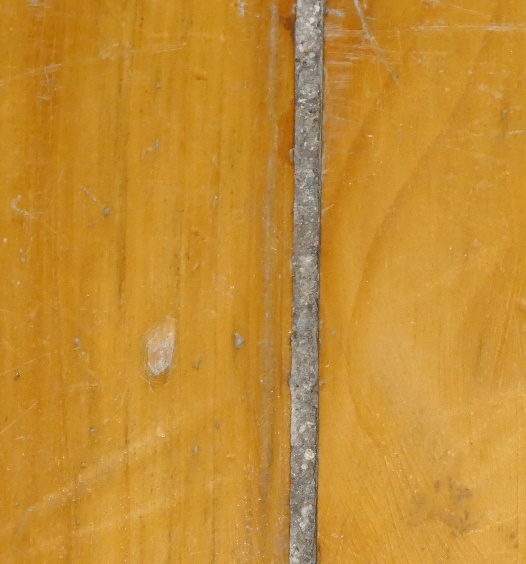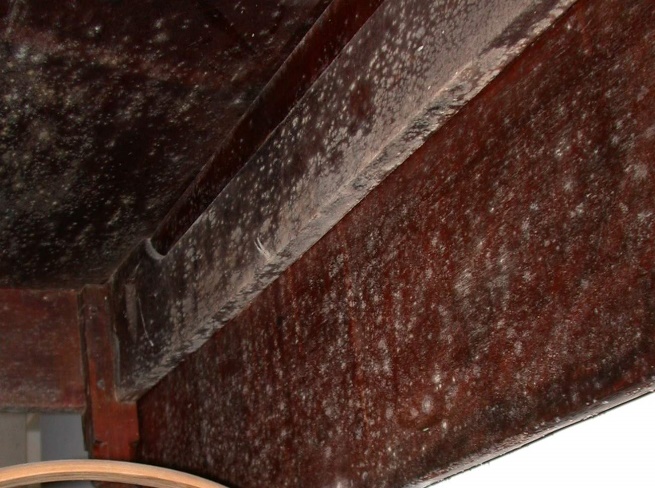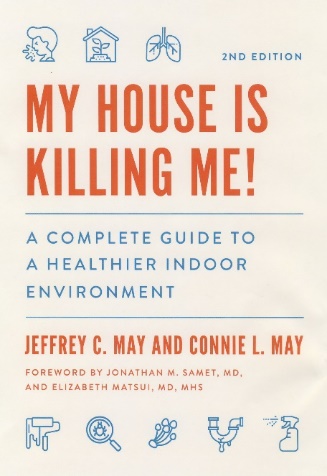IAQ IQ, Fall 2023
©2023 Jeffrey C. May
There are many older houses in New England, where we live. They might not be considered old in Europe, but in the United States a house built in the 1700s and early 1800s is considered “historic.”
As an indoor air quality professional, I am sometimes called to investigate such homes when people who live in them are sneezing, coughing, and wheezing. I often find multiple sources of IAQ problems within these structures.
Flooring: Cracks between floorboards can contain a lot of ancient dust. Whenever someone walks on such flooring, that dust can become airborne, particularly if the boards are loose and foot traffic compresses the air between the flooring and subflooring. This dust can contain mold spores, dust-mite poop, and pet-dander particles.

Dirt basements: Wherever dust and moisture are present, mold growth can ensue. Dirt basements and crawlspaces contain a lot of dust, and the moisture can be provided by water intrusion, evaporation from the soil, and/or elevated relative humidity.
Retrofitted HVAC systems: Sometimes owners will install furnaces in older homes with dirt basements and/or basements containing mold growth. If there are any openings in such a furnace or in ductwork in the basement, air that contains allergens can be entrained into the system. If there is water intrusion in such a basement and the furnace gets wet (even with only a few inches of water), exposed fibrous lining material can become moldy. Some solutions? Remediate the basement, seal the old fieldstone foundation, cover the dirt with some cementitious material, and then dehumidify the basement during the humid season (in New England, generally between mid-April and mid-October), keeping the RH at or below 50%.
Fieldstone foundations: Older fieldstone foundations can lack mortar between the stones. Then water can seep into such basements, and pests can find easy entry.
Mold growth above grade: Often people who love older homes also love older furnishings, like that rocking chair that used to belong to a grandmother, or an old rug they found in an antique store. Such furnishings could have been stored in a moldy basement or garage. (Ever wonder what causes that dusty, musty odor in many antique stores?) Whenever I do an IAQ investigation in an older home, I always inspect the bottoms and backs of furniture and often take samples from antique rugs and furniture.

A home inspector could help a prospective buyer or a homeowner appreciate both the beauty of these old homes while pointing out where repairs or replacements are needed. As an indoor air quality professional, I can give homeowners tips to help them preserve these old “war horses” while creating conditions that are more conducive to healthier indoor environmental conditions and more compatible with our 21st century lifestyle.
Our latest book, Edition 2 of My House is Killing Me, was published in December 2020 and is available on line.
Another new article, “Penny Wise and Pound Foolish,” discusses the important services that home inspectors can provide, not only to potential homebuyers but also to current homeowners/home occupants. The article is listed under “Homeowner Newsletters” on the “Library” page of our website: www.mayindoorair.com. You are welcome to share this article with your clients.
Photographs are the property of May Indoor Air Investigations LLC and cannot be used without permission. jeff@mayindooair.com.

